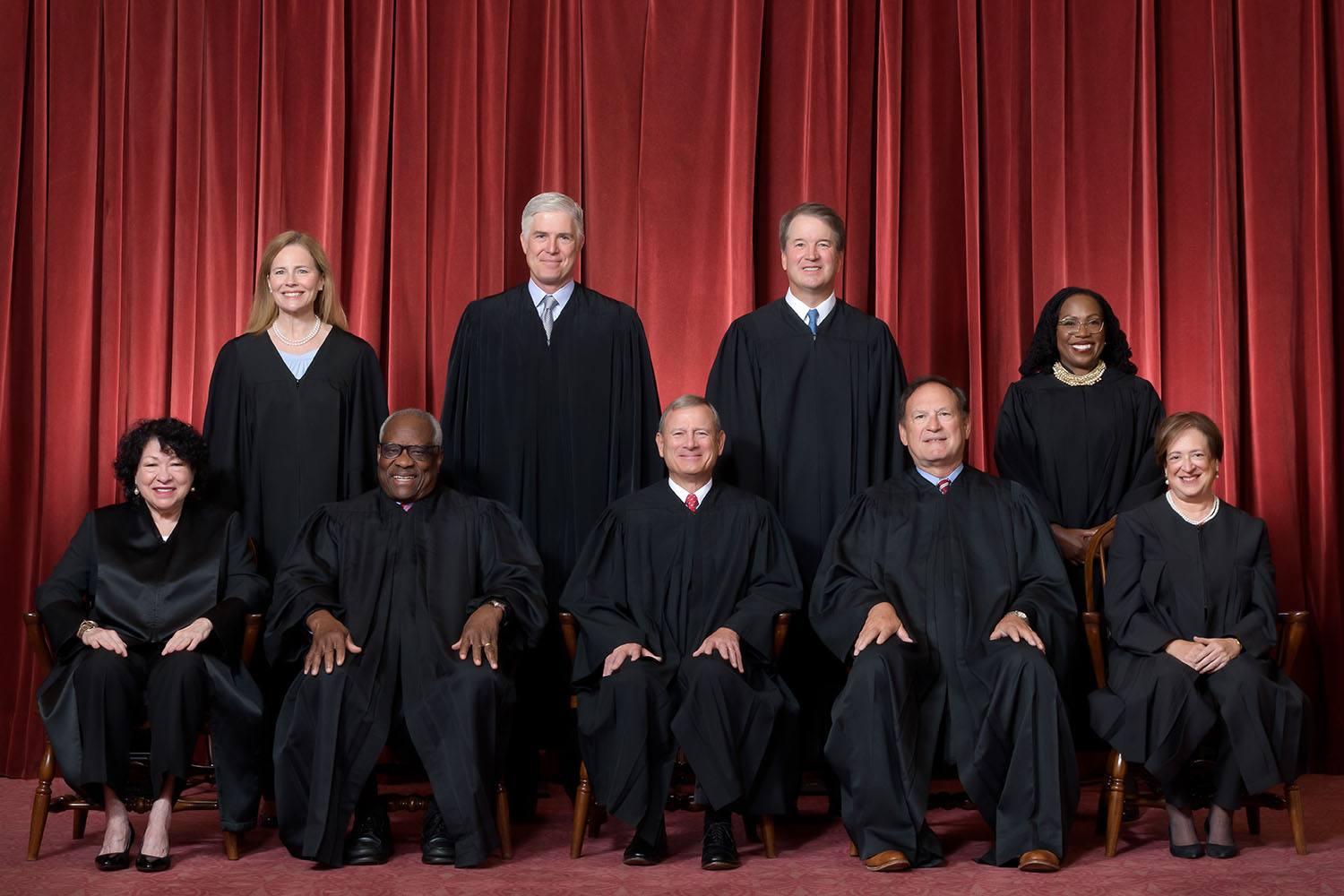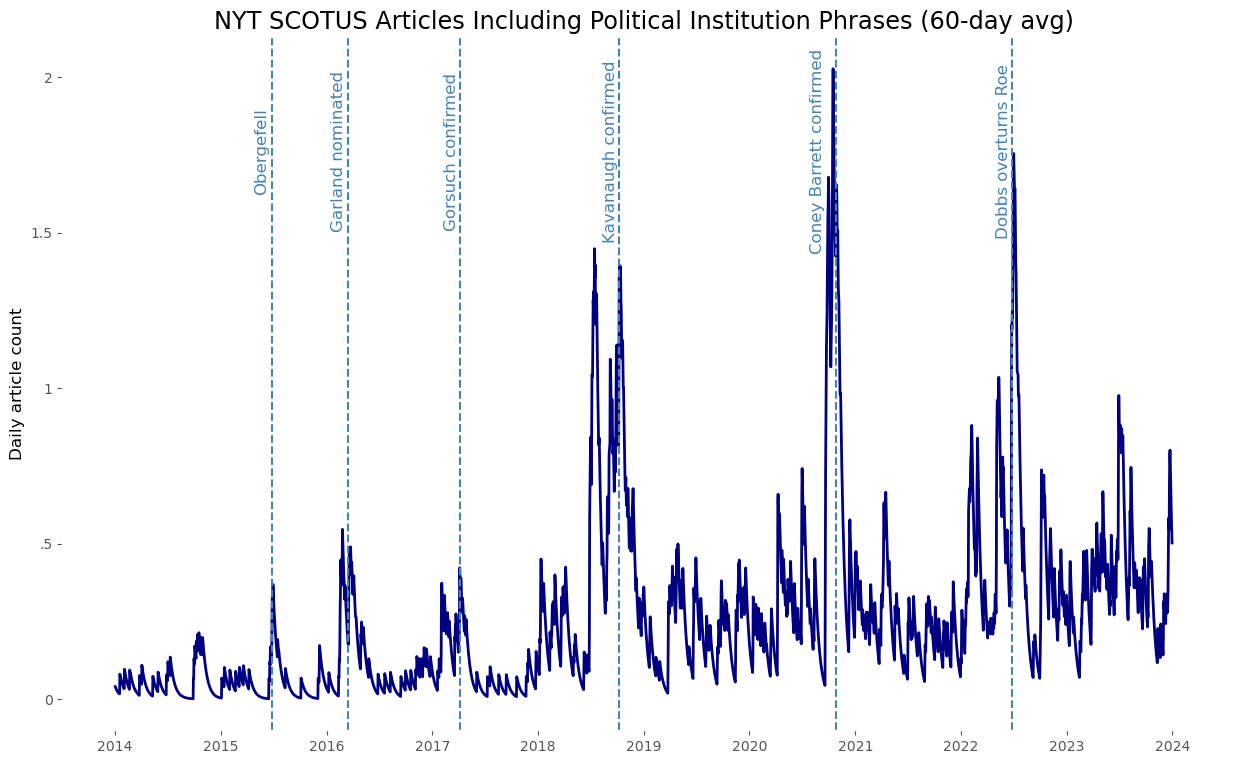Media Coverage of the Supreme Court
Is it as negative as public opinion?

Americans’ confidence in the Supreme Court is at an all-time low. Such an unfavorable reputation is problematic for any public institution, but it carries a unique weight when it comes to the court – an institution that has neither the sword nor the purse to enforce its rulings. Low public approval doesn’t only affect the court’s prestige, but potentially its decisions as well. Among political scientists, this is known as the Dahl-Dooley Hypothesis, which suggests that the court will shift in favor of public opinion when it senses that it is unpopular. As Chief Justice John Roberts famously affirmed, Judges are supposed to be the “umpires” of the American political system, but the question of whether they actually live up to this ideal – which has been long doubted by scholars – has become increasingly contested in public discourse, particularly on the left. 71% of Democrats see the court as conservative today, compared with 47% only three years ago.
Why has this dramatic shift in the court’s standing occurred? New York Times Supreme Court reporter Adam Liptak credits this shift to two main factors: the conservative supermajority’s outsized impact on the law and growing concerns about corruption and ethics. The Times also points out that Democrats’ respectful disagreements with Justices have turned into accusations of illegitimacy, corruption, partisanship, and extremism.
Public opinion is not the only way to quantify people’s perceptions of their government. Analysis of how the media portray the court can shed light on the specific grievances people have and what topics influential journalists deem worthy of coverage. What has media coverage of the Supreme Court looked like amidst this dramatic shift in public confidence? Has the media become more prone to cast the court as a politicized institution?
To answer these questions, I collected all 43,424 New York Times articles mentioning “Supreme Court” published between January 1, 2012 and December 31, 2023. The Times is the most widely-read left-leaning newspaper, and is therefore likely to reflect the left’s perception of the court over this extended time frame. I then identified every article that implied the Court was a political institution by mentioning the phrases partisan divide, political institution, politicization/politicize, ideological, judicial activism, illegitimate, or reactionary. This allowed me to specifically focus on coverage that addressed the court’s politicization and legitimacy crisis. The graph below shows a 60-day moving average of all New York Times Supreme Court articles that mention any of these phrases. The vertical lines represent major events in the court’s recent history.

If public opinion polls already showed that we are living in unprecedented times of low confidence in the court, the graph reveals that we have also entered an unprecedented era of coverage that highlights the politicization of the court since 2018 – a finding with significant implications for the institution’s future and its path towards earning back Americans’ trust.
This shift can’t simply be attributed to an increase in newsworthy events. The years prior to 2018 were also dramatic in many ways. The court struck down bans on same-sex marriage, a decision that many on the right viewed as judicial activism. The extremely contentious Merrick Garland saga played out, followed by Neil Gorsuch’s confirmation in the early months of the new Trump administration. Nevertheless, and despite these controversial moments in the court’s recent history, mentions of politicization in the Times did not reach the levels seen in recent years.
The spikes in politicized coverage of the court can be linked to specific, high-profile events such as Kavanaugh’s confirmation, Amy Coney Barrett’s confirmation, and the Dobbs decision. Yet there has also been a steady increase in the negative coverage more generally as well – the post-2018 era accounts for over 80 percent of all Times articles that discuss the court’s politicization.
We have entered a new era for news coverage of the court – one that casts it more frequently and systematically as a political institution. As the Dahl-Dooley hypothesis suggests, it’s possible the court will respond by shifting its decisions and behavior. The court’s adoption of its first-ever code of ethics in November 2023 might be an example of this. Yet, a certain partisan view of the institution is being cemented in the minds of Times readers, and it’s unclear whether the court can reclaim its reputation as a neutral “umpire,” especially as it rules on cases related to former president Trump during the 2024 election season. Liptak saw the conservative supermajority and corruption as the two most influential factors in spreading distrust on the left. But perhaps politicized media coverage is a third and highly consequential driver of the court’s current illegitimacy crisis.
—Abby Ward
Methodological note: I examined all 43,424 articles containing “Supreme Court” in the New York Times published between January 1, 2012 and December 31, 2023. I then tagged all articles that mentioned any of the following terms within a one sentence window of “Supreme Court”: partisan divide, political institution, politicization, politicize, ideological, judicial activism, illegitimate, and reactionary. I use a 60-day exponential moving average to facilitate interpretation of daily article counts. For additional information regarding our methods, see here. Photo credit: Supreme Court – About the Court.